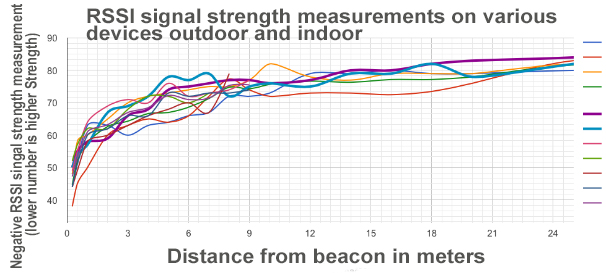Smarter Asset Tracking in Laydown Yards: Bluetooth Beacons
PT&P is the first company in ANY supply category to offer EPC and other customers an asset tracking solution using revolutionary Bluetooth Low Energy (BLE) technology. PT&P has looked extensively at the various technologies that can be used for asset tracking and believes there are significant limitations with historical RFID and Mobile technologies in terms of cost/performance.
Figure 1 – Types of BLE Beacons
![]()
Bluetooth Low Energy (BLE) was a protocol that was developed by Nokia starting in the early 2000s as an extension of the Bluetooth standard. It is a one-way protocol with very low data rates which allows for optimization on cost and battery life. BLE support was built into Android and iOS in 2011-2012 and is currently supported on the vast majority of Apple and Android phones. Its largest application is in the consumer market with Tile asset tracking beacons that are commonly used by consumers for tracking assets such as car keys.
Figure 2 – How BLE Beacons Work
![]()
The way BLE works is that a BLE beacon is programmed to emit a signal on regular interval at set power level. A BLE hub listens for beacons and when detected, the hub registers the location of the beacon based on the signal strength of the connection with the beacon and GPS coordinates of the hub. Android and iOS phones running a BLE application operate as Hubs and allow for a “crowd-sourcing” approach to asset tracking rather than a traditional engineered setup of hubs.
Figure 3 – How BLE Beacons Determine Distance
![]()

The advantages of BLE are:
- Simplicity – the radio is based on the familiar Classic Bluetooth radio, and its simple mode of operation can be managed by a small protocol stack
- Low power – the radio is designed to spend nearly all of the time in power-down mode, drawing a negligible current – even in active transmit mode it draws a low peak current, which suits operation on a small battery
- Robust radio – designers can target a line-of-sight range of as much as 100m. A frequency-hopping scheme makes a Bluetooth LE radio highly resistant to interference at its 2.4GHz license-free band
- Real-time operation – a connection between a node and a master device can be made, data transferred and the connection shut down, in just 3ms
- Compatibility – Bluetooth is by far the best known personal area networking technology in the world, and is backed by all the main manufacturers of consumer devices.
- iOS and Android Support – BLE is built into the 2 dominant mobile operating systems which allows for crowdsourcing application
- Consumer Scale – BLE is actively sold as a consumer device by companies such as Tile. This gives the technology scale which can be leveraged in Industrial applications.
PT&P has partnered with a leader in the industrial applications of BLE beacons. They have developed an end to end Real-Time Location Services Platform which currently works with BLE Beacons but will soon add additional asset tracking methods such as GPS and Mobile. Their SaaS based platform also allows for the addition of business logic to support the effective use of asset tracking in particular vertical applications. They have put extensive logic into the platform to support the unique needs of automotive dealerships and have started the process for adding logic for the construction industry working with PT&P.
One of the key features of the platform is a find mode where the platform directs the user to specific beacon based on the signal strength between the cell phone and beacon (e.g. the closer the cell phone gets to the beacon, the stronger the signal). PT&P has broken down all the major processes at an EPC Construction site into a systems requirements document to inform its partner on how best to expand the functionality of the platform for all key construction processes. One of the interesting areas of feedback with Construction teams has been that traditional software platforms such as SAP and Oracle are poor in terms of supporting vertical industry-specific needs of EPC construction sites. PT&P is working with its partner to expand the functionality of the platform to provide a level of mobile enablement that has not been seen on Construction Sites.
Figure 4 – BLE App
![]()
PT&P has worked with its partner to optimize power levels and polling frequency for EPC applications. We anticipate 150+ ft of non line of sight distance in terms of forming connections with iOS and Android devices. Phones with the asset-tracking application could be used by PT&P or customer personnel to register locations of and find beacons.
The cost for each BLE beacon is FAR below any other active asset tracking technology because of lower energy requirements and higher scale of BLE Beacons. This would allow EPCs to take a completely different approach in the management of their laydown yards.
PT&P is prepared to work closely with any customer on delivering a superior asset tracking solution that covers PT&P products as well as other products in an EPC project. Our service can include the following:
- Strategy on which items to Track at the Item Level vs Palette Level
- Management of Key Information about each item on the mobile platform (e.g. drawings, install instructions, etc.)
- Use of Mobile Specific Capabilities (e.g. take photos to allow for centralized checks of proper installation)
PT&P has worked on thousands of construction projects. Lost materials and improper installations continue to cost EPCs millions of dollars on major projects even as many are facing tightening margins. PT&P believes that effective use of the latest technologies can provide a significant efficiency benefit in terms of both time and money.
